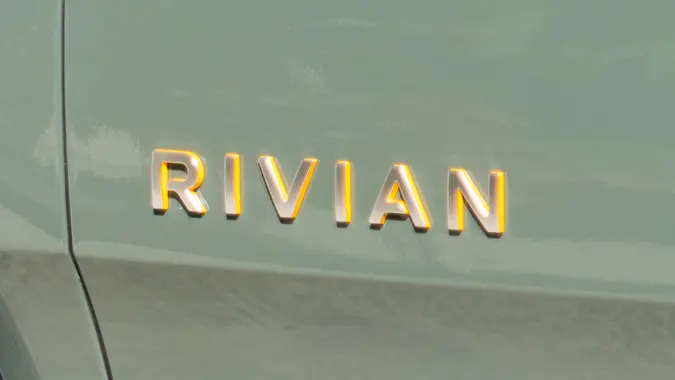What Is a Checking Account and How Does It Work?

Commitment to Our Readers
GOBankingRates' editorial team is committed to bringing you unbiased reviews and information. We use data-driven methodologies to evaluate financial products and services - our reviews and ratings are not influenced by advertisers. You can read more about our editorial guidelines and our products and services review methodology.

20 Years
Helping You Live Richer

Reviewed
by Experts

Trusted by
Millions of Readers
Key Takeaways
- A checking account is a type of liquid bank account that enables holders to deposit and access money with ease.
- Money can be added or taken out by using ATMs, debit cards, checks or by utilizing online banking services.
- Checking accounts offer direct and immediate fund withdrawals and an automatic record of transactions.
- A drawback is the minimal amount of interest that you earn on your balance.
- When looking to open a new account, you should review the details regarding minimum balances, overdraft fees and withdrawal policies.
What Is a Checking Account?
Checking accounts are liquid bank accounts that give account holders easy access to their funds, often through the use of debit cards. The catch is that, although convenient for everyday use, these accounts don’t offer much interest, if at all.
The high liquidity of checking accounts means that account holders can access their money without jumping through any hoops. Here’s how it fundamentally works:
- You open a checking account by first depositing the specified opening balance into the account as an initial balance.
- You then continue depositing your periodic earnings and any amounts needed for day-to-day expenses.
- Later, when you have expenses, you withdraw cash as needed.
Checking accounts are often paired with debit cards, which can be used to withdraw funds, shop online or purchase goods from stores that accept card payments. Debit cards are not checking accounts, they are extensions of checking accounts. These payment cards are linked to the funds in the checking account and allow for withdrawals and deposits at locations other than the bank, like ATMs, stores and online retailers.
What Are the Benefits of a Checking Account?
Checking accounts come with many benefits over both credit cards and savings accounts. Access to cash is safer and easier, there are convenient opportunities for direct withdrawals, and your transactions are automatically recorded.
Easier, Safer Access to Cash
Carrying a debit card associated with a checking account is safer than carrying cash. If you happen to lose your card, the money in your account remains safe, as thieves cannot access your funds without knowing your unique PIN. However, if you lose a wallet with cash in it, anyone who finds the money can take it and spend it. Checking accounts offer a singular place to store your money and allow you to spend without taking the risk of carrying hard cash.
Direct Withdrawals
When using your checking account or its associated debit card to buy something, you essentially withdraw money from your account. Thus, you will never need to worry about a long, impending credit card bill, as you only spend the money that’s already in your account. In addition, if you’ve had trouble sticking to a household budget in the past, a debit card can provide you with an alternative to both cash and credit.
Automatic Record of Transactions
It’s impossible to create a household budget unless you know your spending patterns. If you use cash for your purchases, you will need to meticulously write down every purchase you make to keep an accurate record of your spending.
However, if you shop using just your checking account, the statement compiled by your bank will automatically act as a reviewable record of your expenses. This makes it immensely easier to review your purchases afterward. What’s more, you can even connect a money management app to your online banking account to automatically categorize your transactions.
What Is the Difference Between a Checking Account and a Savings Account?
There are two main differences between checking and savings accounts: the underlying principles of holding the accounts and the ease with which you can access your funds in them.
Checking accounts make it easy to spend money, which is why most people use their checking accounts to pay for everyday purchases like groceries, clothing and other household goods.
Savings accounts, on the other hand, are designed to make access to funds difficult. These accounts are not associated with debit cards that you can use to withdraw funds directly. In fact, you might even be saddled with fees or penalties if you make too many withdrawals from your savings account in a month.
However, you will earn interest on the funds held in your savings account, meaning that your balance will increase over time even with no additional deposits. While this interest might be less than the possible returns of investing in a growth-oriented ETF or other stock market investments, you don’t need to worry about losing the money in savings accounts.
In reality, most account holders use their savings account to build a household emergency fund and save for major future purchases, like a house or an international vacation.
Final Take
In short, if you don’t already have a checking account, you are missing out on some serious safety and liquidity benefits. Have no worries though, for opening a checking account is easier than ever with more and more banks instituting online applications. Several online banks do not even maintain in-person locations, meaning that you can manage all of your checking services online. That said, you should always review the account details regarding minimum balances, overdraft fees, online banking and withdrawal and deposit policies when deciding what kind of account is best for you.
More on Checkings Accounts
- 7 Types of Checking Accounts
- Checking vs. Savings Accounts
- How Many Checking Accounts Should You Have?
- How Much You Should Have in Your Checking Account
- What Do You Need To Open a Checking Account?
- How To Write a Check
Best of Checking Accounts
- Best Checking Accounts
- Free Checking Accounts With No Minimum Deposit
- Best Free Checking Accounts With No Minimum Balance
- Best Online Checking Accounts
- Best Rewards Checking Accounts
- Best Student Checking Accounts
- Best Checking Accounts for Seniors
FAQ
Here are the answers to some of the most frequently asked questions regarding checking accounts.- What is a checking account used for?
- A checking account is typically used for gaining easy access to your funds. Withdrawals and deposits can be made through ATMs, debit cards, checks or online banking services.
- Is a debit card a checking account?
- A debit card is an extension of a checking account. They are linked to the money in a checking account and allow you to access your funds on the go.
Thomas Streissguth contributed to the reporting for this article.
Our in-house research team and on-site financial experts work together to create content that’s accurate, impartial, and up to date. We fact-check every single statistic, quote and fact using trusted primary resources to make sure the information we provide is correct. You can learn more about GOBankingRates’ processes and standards in our editorial policy.
- Huntington. "Checking Account vs Debit Card."
- Consumer.gov. "Using Debit Cards."
- Chase. "Checking vs. Savings Account: What should I choose?"
 Written by
Written by  Edited by
Edited by 

























